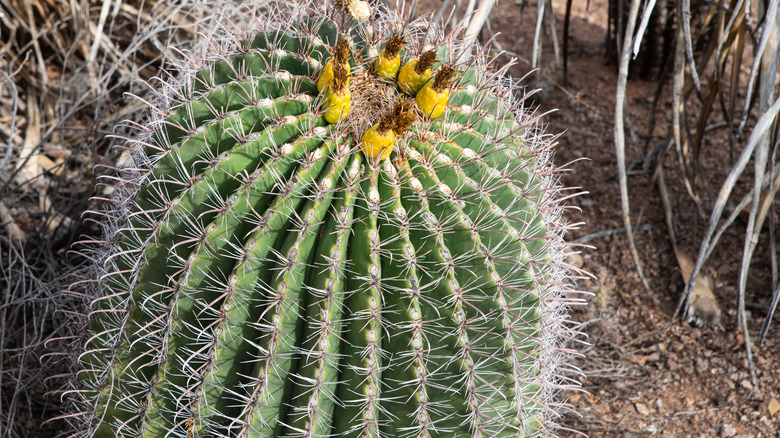Is It Actually Safe To Drink Water From A Cactus?
There can't be many circumstances where you would find yourself in need of suckling on a cactus to quench your thirst. Of course, some nights out can get pretty heavy, but have you ever woken up after hours of drinking to find yourself in a desert, straddling a cactus? It can be absolutely guaranteed that someone has, if only in a western.
It may not be such shenanigans that leave you in an uncomfortable position, however — consider the possibility that your adventures through life lead you to the point of hiking across a featureless desert, nothing around but endless sand and overwhelming silence. You can only carry so much water — which is why you may need to rely on drinking from a cactus.
Naturally, extracting water from a cactus is unlikely to be a straightforward exercise, but it's made even more complex by the fact that very few cacti offer water that's safe for human consumption (via Britannica).
Humans can only obtain water from two types of cactus
According to Cactusway, one cactus in particular is going to help save your life if you find yourself stranded and dehydrated in a desert: a barrel cactus known as fishhook (above). This is because the fishhook cactus contains far fewer of the acids and alkalis that can be extremely detrimental to human health, found in other varieties of cacti. Nevertheless, it should only be consumed in small quantities to avoid unpleasant, possibly life-threatening, side effects such as joint pains and vomiting.
Britannica also notes that the fruits of certain cacti can be useful for harvesting potentially vital nourishment. As noted by The Spruce Eats, the fruits of prickly pear cacti can be eaten straight off the plant. They are considered to have a very sweet taste and are a major component of Mexican recipes.
While the likelihood of needing to drink from a cactus is considerably low, cacti are believed to be of use in our mainstream water systems. NBC News reports that the slime contained within prickly pear cacti has been found to help purify drinking water, reducing impurities such as arsenic, bacteria, and cloudiness.

